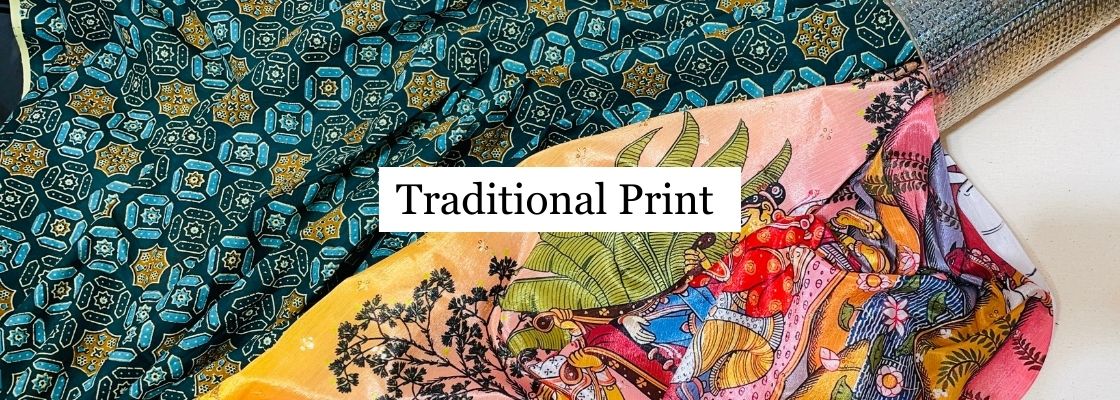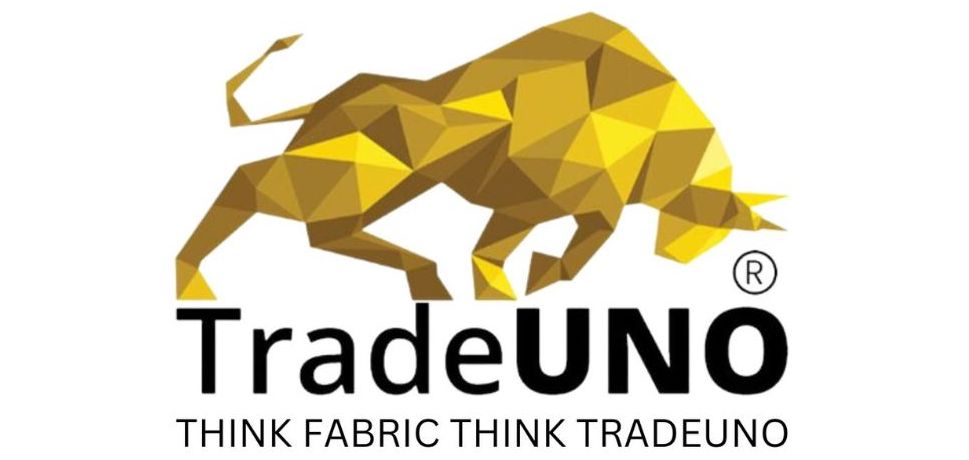Traditional Print Fabric
Traditional print fabric refers to textiles that have been decorated with patterns or designs using a variety of printing techniques. These fabrics often feature intricate, repetitive designs deeply rooted in cultural symbolism and history. The prints can be created using block, screen, or digital printing. The designs can stretch from simple geometric shapes to complex scenes depicting historical or mythological events. The colours used in these prints are often vibrant, adding to the visual charm of the fabric.
Evolution of Traditional Printed Fabrics
- The history of traditional print fabric dates back thousands of years, with evidence of textile printing found in ancient civilisations across the globe.
- In India, block printing on fabric was developed around 2000 BC. Similarly, the screen printing technique was invented in China during the Song Dynasty (960-1279 AD). In Africa, particularly in Nigeria, the traditional method of Adire (tie and dye) has been used for centuries.
- The Industrial Revolution in the 18th century brought significant advancements in textile printing, with the development of roller printing and, later, screen printing.
- In the 20th century, digital printing emerged, allowing for more complex and detailed designs. Despite these technological advancements, many cultures preserve traditional fabric printing methods, valuing them for their cultural significance and unique aesthetic.
Versatile Applications of Traditional Printed Fabrics
Traditional print fabrics are used in various applications, reflecting their versatility and aesthetic appeal.
- In fashion, they are used to create a variety of garments, from everyday clothing to special occasion wear. Designers often use these fabrics to add a touch of cultural heritage to their collections.
- In-home decor, traditional print fabrics are used for upholstery, curtains, and other furnishings, adding colour and pattern to interior spaces. They are also used to create accessories like bags, scarves, and jewellery.
- Beyond these, traditional print fabrics play a significant role in cultural ceremonies and rituals in many societies. For instance, traditional Yukata kimonos made from printed cotton fabric are worn during summer festivals in Japan.
Thus, with their rich history and diverse applications, traditional print fabrics remain integral to our cross-cultural richness.
Varieties of Traditional Print Fabrics
Traditional print fabrics boast a rich heritage, each type intricately weaving cultural stories.
- Dabu, known for its mud-resist printing, showcases earthy motifs and natural dyes. Bandhani, a tie-dye technique, creates vibrant patterns, symbolising joy and celebration.
- Ajrakh, rooted in the Indus Valley Civilization, presents geometric and floral motifs through intricate block printing.
- Sanganeri, hailing from Rajasthan, features bold colours and detailed designs.
- Kalamkari, with hand-painted or block-printed motifs, narrates mythological tales.
- Ikkat involves resisting dyeing yarns before weaving, producing blurred patterns.
- Lastly, a double ikat technique, Patola results in symmetric patterns, embodying timeless elegance.
Each type contributes to the global cultural tapestry, reflecting centuries of craftsmanship and artistry.
Functions and Attributes
- Vibrant and Intricate Designs: Traditional print fabrics are known for their vibrant colours and complex patterns, often carrying cultural or symbolic meanings.
- Natural Materials: These fabrics are made from natural materials like cotton, silk, or wool.
- Diverse Uses: These fabrics find use in various sectors, from fashion to home décor. They are used for clothing, accessories, traditional costumes, upholstery, curtains, and rugs.
- Durability and Versatility: Traditional print fabrics are durable and versatile, making them suitable for various applications.
- Cultural Significance: The prints often reflect the cultural heritage of the region they originate from, adding to their appeal.
- Popular Choice: Their unique aesthetic and cultural value make them popular for designers and consumers.
Why Should You Buy Traditional Print Fabric Online?
Buying traditional print fabric online offers numerous benefits. It provides access to various designs from different cultures at your fingertips. Our online platform TradeUNO offers detailed descriptions and images, helping you make informed decisions. It’s convenient, time-saving, and often more affordable due to competitive pricing and discounts.
Dress to Impress: Latest Traditional Print Fabric Trends in 2023
In 2023, traditional print fabric trends for festivals and occasions will embrace heritage and innovation.
- Floral prints are making a big comeback with large, eye-catching designs.
- Stripes are being used creatively across various garments.
- Plaid, particularly tartan, is expected to trend. Prints with splatters of colour, hues that fade into one another, and cloud shapes are gaining popularity.
There’s also a resurgence of locally inspired prints that reflect our background, culture, and community. These trends are preserving the rich tradition of textile artistry and adding a contemporary twist, making each celebration more vibrant and meaningful.
Frequently Asked Questions about Traditional Print Fabric
1. How is a Traditional Print Fabric Made?
Ans: Traditional print fabric uses block printing, screen printing, or resist dyeing, often involving intricate handwork and craftsmanship.
2. What is the Significance of Dabu Printing in Traditional Fabrics?
Ans: Explore the heritage of Dabu printing, a mud-resist technique that imparts earthy charm to fabrics with intricate motifs and natural dyes.
3. Why Buy Traditional Print Fabric Online?
Ans: Buying traditional print fabric online offers various designs, detailed product descriptions, convenience, and often more affordable pricing due to competitive discounts.
5. What are the Latest Trends in Traditional Print Fabrics?
Ans: The latest trends include floral prints, creative stripes, plaid, locally inspired prints, and designs that blend tradition with contemporary styles.
6. How Do You Choose the Best Traditional Print Fabric Online?
Ans: Look for detailed product descriptions, customer reviews, and seller ratings. Consider the fabric material, print technique, and care instructions.

